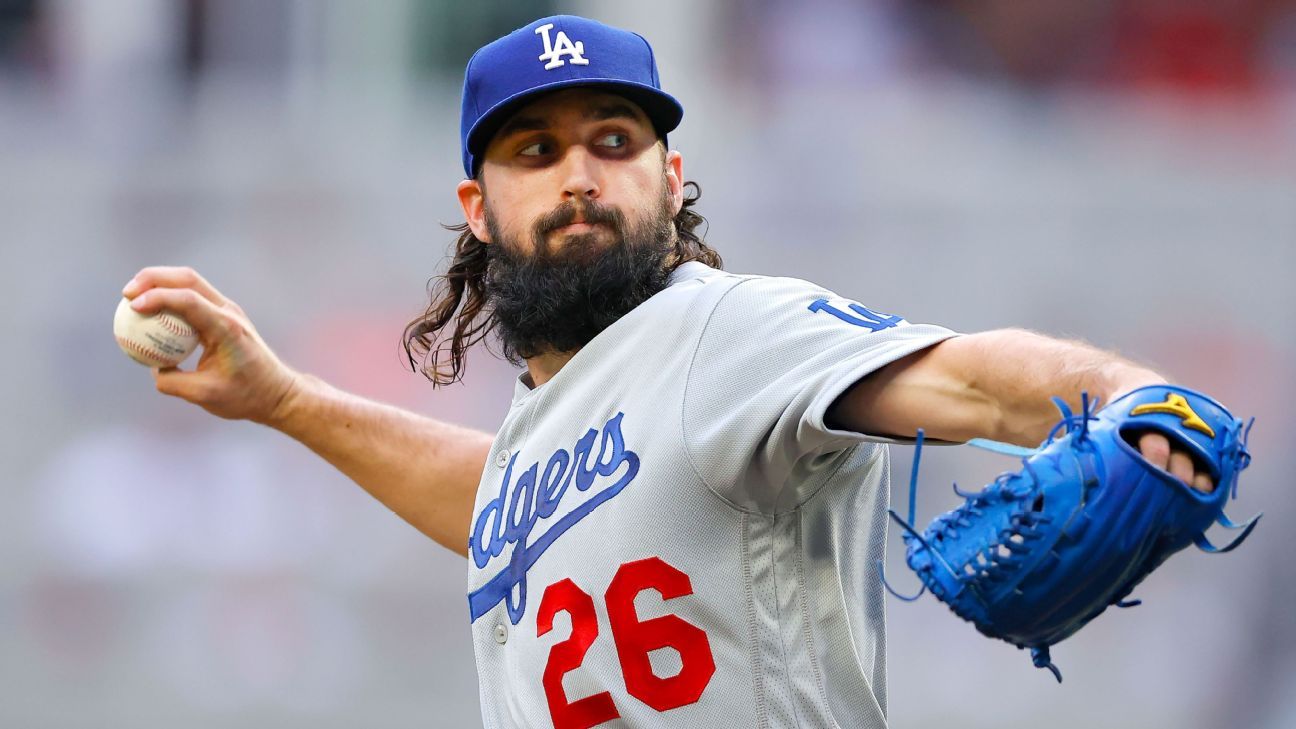
The Mariners traded Johnson to the Houston Astros at the 1998 trade deadline. When Japanese star Ichiro Suzuki joined the team in 2001, he also took No. 51.
The Ichiro version of No. 51 will be retired by the franchise on Aug. 9, 2025, just after his Hall of Fame induction this summer.
Johnson, a 10-time All-Star, won the first of his five Cy Young Awards with Seattle in 1995. With the Mariners, the lanky 6-foot-10 left-hander — nicknamed “Big Unit” — was 130-74 with a 3.42 ERA in 274 appearances (266 starts) with 51 complete games and 19 shutouts.
“I’m happy that my contributions over the 10 years that I was there are being acknowledged now,” Johnson said via Zoom. “It’s been a long time, that’s for sure.”
In his 22-year career, Johnson, now 61, had a record of 303-166, a 3.29 ERA and 4,875 strikeouts, second only to Nolan Ryan (5,714) in major league history. He and Ryan are two of the only four players to record at least 300 wins and 4,000 strikeouts, joining Roger Clemens and Steve Carlton on the short list.
A year Johnson looks back on with particular fondness is the 1995 season. The Mariners’ future in Seattle was cast into doubt when in September of that year, King County voters rejected subsidy taxes to build a new stadium.
Simultaneously, the Mariners enjoyed a prosperous season on the field at the Kingdome, which culminated in reaching the AL Championship Series before falling to Cleveland. Ultimately, the King County Council approved funding for a new stadium.
“Looking back at it now and that story being documented by the Mariners, it worked out,” Johnson said. “I’m just thankful that I was a big part of that and everybody else was a big part of it, and everything just kind of jelled for all the players.”
That season, Johnson went 18-2 with a 2.48 ERA during a 145-game season.
“Randy is both one of the greatest pitchers in Major League Baseball history, and one of the most important figures in our organization’s history,” Mariners’ chairman and managing partner John Stanton said. “During the 1995 season that changed the future of this franchise, his 18-2 record was properly recognized with his first Cy Young Award.
“More importantly, and somewhat lost to history, the Mariners were an amazing 27-3 in his 30 starts that season, an incredible 24 games over .500, compared to a record of 52-63 when any other starter took to the hill for the club. His domination that year carried the Mariners to our first-ever postseason, which led directly to the construction of T-Mobile Park and the Mariners remaining safely in Seattle forever.”
Ichiro will become the third Mariners player to have his number retired, joining Hall of Famers Ken Griffey Jr. (No. 24) and Edgar Martinez (No. 11). The Mariners, like all MLB teams, also have retired Jackie Robinson’s No. 42.
“I know the significance of Ichiro and his accomplishments, and I didn’t want to interfere with his Hall of Fame induction this year or his number retirement this year,” Johnson said. “And so, the one contingent factor I had was if this was going to happen that I didn’t want to take away anything from his deserving day.”
Johnson also played for the Montreal Expos (1988-89), Astros (1998), Arizona Diamondbacks (1999-2004, 2007-08), New York Yankees (2005-06) and San Francisco Giants (2009). The Diamondbacks retired his number in 2015, and he was inducted into the National Baseball Hall of Fame wearing a Diamondbacks cap.
“To me, it was a difficult choice,” Johnson said. “But, it was the right choice because statistically, I did more (in Arizona). Now if I could split the plaque and put a little bit of an M and a little bit of an A.”
The Associated Press and Field Level Media contributed to this report.














